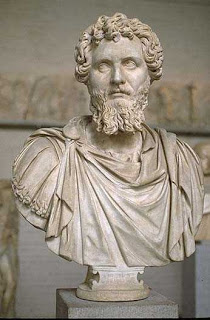 |
| Severus Septimus, ruled AD 193-211 |
Archaeological finds also indicate that there were other African people in the upper echelons of society at that time. A Roman grave found in York contains a skull of a Black or mixed-race woman. Her sarcophagus was made of stone and also contained a jet bracelet and ivory bangle, both indicators of great wealth at that time. Later, the Vikings raided the north coast of Africa, taking people as slaves to Ireland and Britain.
There are numerous instances of interest and surprise to be found in the history of Black Britons. Queen Phillipa (b.1313, Belgium) was married to the future King Edward III and descriptions of her indicate African ancestry. Their son was known as the Black Prince, a reference to his appearance.
Africans arrived in Britain in the 16th century in the entourage of Catherine of Aragon. An illuminated manuscript from 1511 shows a black trumpeter in the retinue of King Henry VIII.
 |
| Manuscript 1511 |
The increase in trade between London and West Africa resulted in the growth in the population of Africans. The first recorded Black resident was in 1593, a man named Cornelius. Another influx of Africans occurred in the 17th century when people were freed from Spanish slave ships.
 |
| Portrait, Queen Charlotte, 1762 |
There is currently much discussion among historians of the African ancestry of Queen Charlotte, consort of King George III (1738-1820), after whom Charlotte, North Carolina is named.
The slave trade and its subsequent abolition in Britain resulted in the arrival of more Africans in the 17th and 18th centuries. For more readings on Black history in Britain, see the link to the website The Black Presence in Britain.
Two museums in Britain dealing with some of the history of Blacks in Britain can be found at this link.
